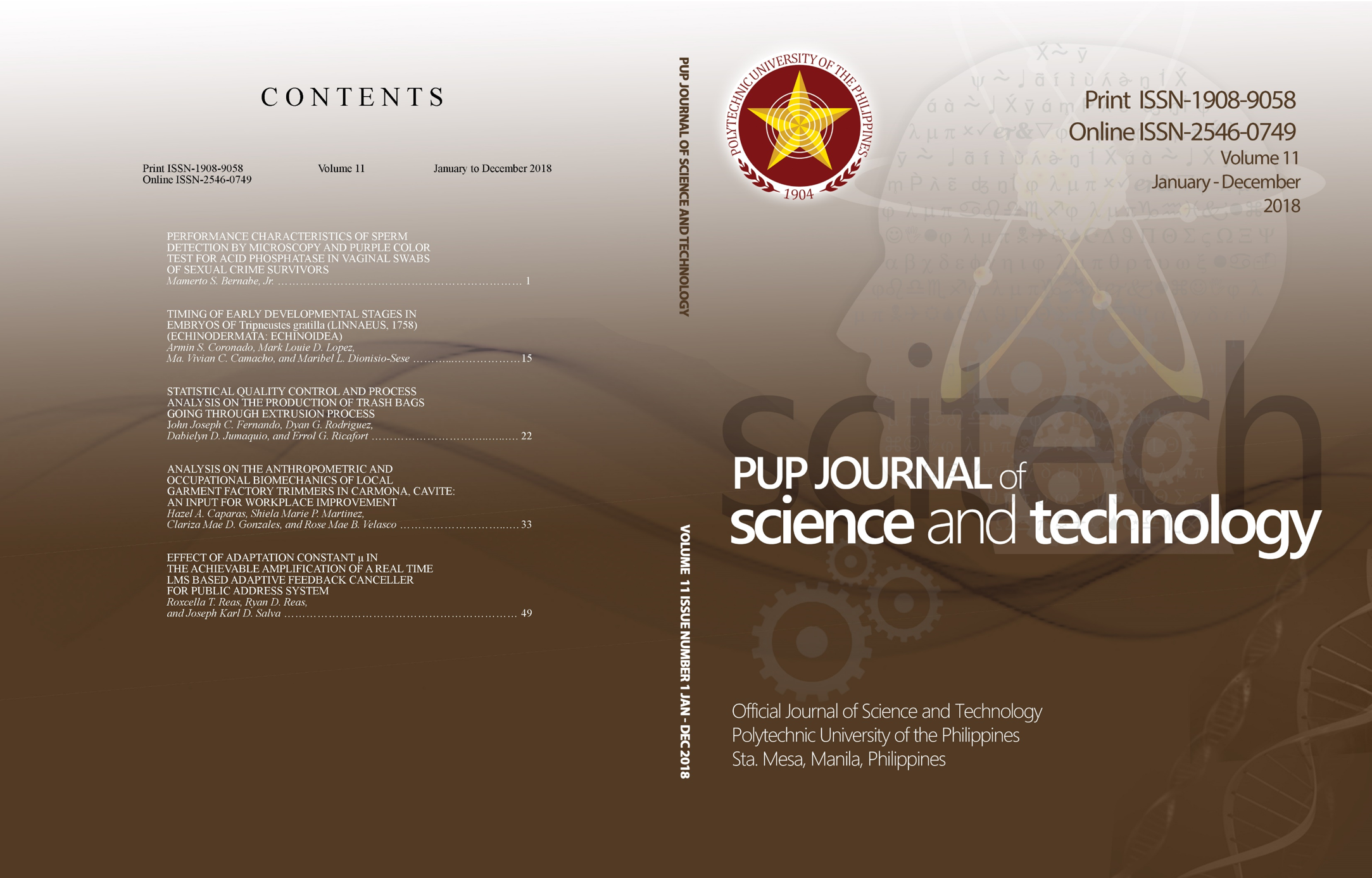Analysis On The Anthropometric And Occupational Biomechanics Of Local Garment Factory Trimmers In Carmona, Cavite: An Input For Workplace Improvement
Main Article Content
Abstract
In every work environment, it is important to identify risk factors that may contribute to the development of occupational disorders. This study aimed to analyze the work system of a local garment factory’s trimming department and to minimize the risk of developing musculoskeletal disorders (MSDs) among workers. The study involved ergonomic assessment wherein the proponents performed job worksite analysis, anthropometric analysis and utilized ergonomic tools such as Body Discomfort Chart (BDC) and Rapid Entire Body Assessment (REBA). This was used to identify the body segments with high degree of perceived discomfort that eventually may lead to work-related disorders. Then, the study developed ergonomic interventions to mitigate the development of MSDs. Lastly, evaluation using postural analysis to simulate the new working posture of the trimmers in improved workplace design was done. The result showed mismatch between workplace design and anthropometric measurements that resulted to strong perceived body discomfort (p = 0.001) predominantly in lower back, shoulder and calf. Assessment indicated medium to high risk exposure to MSDs and implied that change in work system is required immediately (p = 0.000). Ergonomic interventions recommended improvement on workplace design components, which comprised of sitting-standing working position, a chair that every worker would fit in with an adjustable height from 57 - 63 cm (22.44 - 24.80 in) and an adjustable forward-tilting seat up to 15° to address lumbar area problems. The ergonomic solutions involved application of Anthropometry and Occupational Biomechanics guidelines in order to fit the work systems elements to the workers and to maintain the neutral working positions of trimmers.
Downloads
Article Details
Section

This work is licensed under a Creative Commons Attribution-NonCommercial 4.0 International License.
How to Cite
References
Caparas, H. & Matias, A. (2018). A Task Analysis of Small-Scale Jewelry Craft Workers to Investigate the Effects of Work System Elements and Sitting Mobility on Body Discomfort. Advances in The Human Side of Service Engineering, 215.
Chan, A. H. & Jiao, Y. (1996). Development of an anthropometric database for Hong Kong Chinese CAD operators. J Hum Ergol, 25(1), 38-43.
Corlett, E. N. & Bishop, R. P. (1976). A technique for assessing postural discomfort. Ergonomics, 19(2), 175-182.
Freivalds, A. & Niebel, B. (2012). Neibel's Methods, Standards and Work Design (12th Edition). United States of America: McGraw-Hill Companies, Inc.
Golebowicz, M., Levanon, Y., Palti, R., & Ratzon, N. Z. (2015). Efficacy of a telerehabilitation intervention programme using biofeedback among computer operators. Ergonomics, 58(5), 791-802.
Kotadiya, S. M., Majumder, J., & Kumar, S. (2018). Application of Biomechanics Instrumentation in Occupational Health Research. In Design and Development of Affordable Healthcare Technologies (pp. 85-102). IGI Global.
McAtamney, L. & Corlett, E. N. (1993). RULA: a survey method for the investigation of work-related upper limb disorders. Appl. Ergon., 24(2), 91-99.
Salvendy, G. (2012). Handbook of Human Factors and Ergonomics Fourth Edition. Hoboken, New Jersey: Wiley & Sons, Inc.
Stanton, N. A., Hedge, A., Brookhuis, K., Salas, E., & Hendrick, H. W. (Eds.). (2004). Handbook of human factors and ergonomics methods. CRC press.

